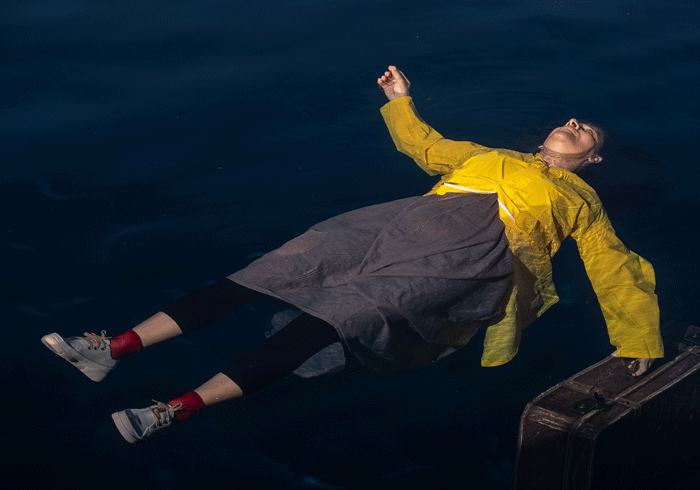ArtReview sent a questionnaire to artists exhibiting in the various national pavilions of the 2019 Venice Biennale, the responses to which will be published daily in the lead-up to the Venice Biennale opening on 11 May.
Nujoom Alghanem is representing the United Arab Emirates. The pavilion is in the Arsenale, and is curated by Sam Bardaouil and Till Fellrath, who joined Alghanem in answering this questionnaire
What can you tell us about your exhibition plans for Venice?
Nujoom Alghanem: I will be presenting a site-specific two-channel video installation titled Passage that expands my experimentation with contemporary forms of Arabic poetry through the language of film. Drawing on my 2009 poem ‘The Passerby Collects the Moonlight’, the piece is an exploration of the psychological, physical and emotional impact of displacement.
Sam Bardaouil and Till Fellrath: Poetry plays a central role in Passage, which reflects Nujoom’s intrepid approach to traditional Arabic poetry, and filmmaking. While they may seem different, they are two forms of storytelling, one ancient, and the other relatively new within the context of the UAE. Nujoom’s practice is equally steeped in both, and she has created an immersive piece that reads like visual poetry.
What does it mean to ‘represent’ your country? Do you find it an honour or is it problematic?
NA: National representation is often framed within certain essentialist expectations. This can be especially true of certain places that have been portrayed through a simplistic lens, which reduces the individuals, artists included, who come from that place into cultural stereotypes. If through my work I can shed light on certain realities that complicate the narrative about where I come from, then I am certainly proud.
Is your work transnational or rooted in the local?
NA: The work deals with themes that affect us all. It encompasses complex issues, through a nuanced perspective that blurs the boundaries between the culturally specific and globally relevant through pulling together narrative threads that build on my own personal experiences as well as on the stories of others.
SB & TF: The framing of the question is in itself problematic, as it is pits the local against the transnational, while they have always been a continuum. This is a fundamentally flawed construct that underpins so many meta-narratives: north vs south, original vs copy, etc. Nujoom’s work is not burdened by such polarising differentiations, and focuses primarily on the complexity of the shared human experience.
How does having a pavilion in Venice make a difference to the art scene in your home country?
NA: The pavilion can function as a platform where artists, curators and cultural practitioners from all over the world can engage with one or more examples of contemporary artistic practices from the UAE. This would hopefully lead to further conversations, not only in Venice but back home, resulting in opportunities for more Emirati artists to exhibit abroad.
If you’ve been to the biennale before, what’s your earliest or best memory from Venice?
NA: I have; in 2017 my work was included in the National Pavilion UAE’s group exhibition Rock, Paper, Scissors: Positions in Play. It was a very stimulating and exciting experience, and I am thrilled to be returning this year to show a very different aspect of my artistic practice.
SB & TF: One of the most magical moments for us was witnessing the first encounter between the visitors and Akram Zaatari’s Letter to A Refusing Pilot, the film we commissioned Akram to create for the National Pavilion of Lebanon, which we curated in 2013.
You’ll no doubt be very busy, but what else are you looking forward to seeing?
NA: Everything! I’ll be making my way around the Giardini and Arsenale so that I can take it all in, but I’m particularly interested to see the many national pavilions that are scattered across Venice and some of the collateral events as well.
SB & TF: Ralph’s main show of course! Also, an exhibition at Museo Correr of a donation of rarely seen before early-nineteenth-century miniature portraits.
The Venice Biennale runs 11 May – 24 November 2019
